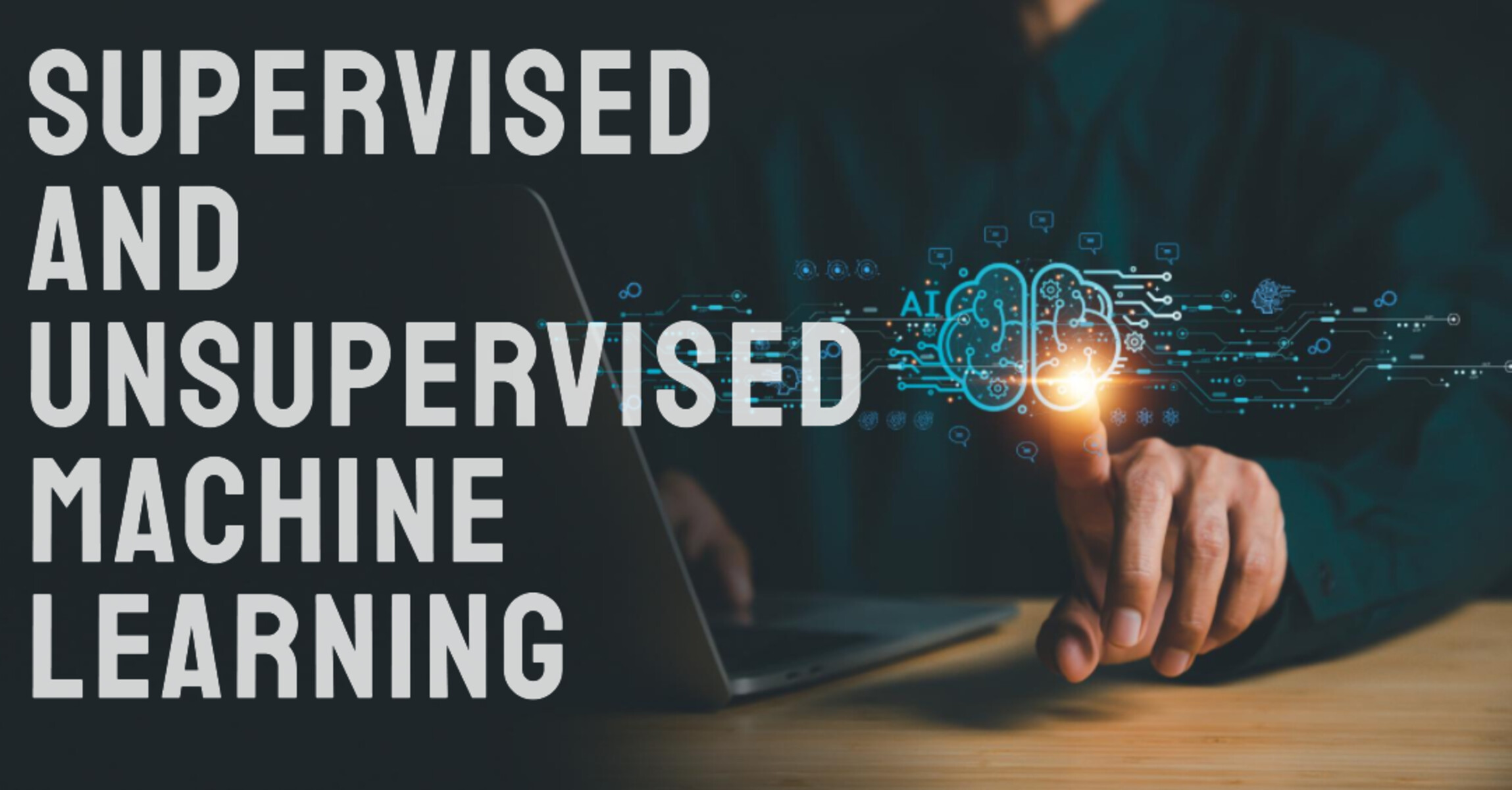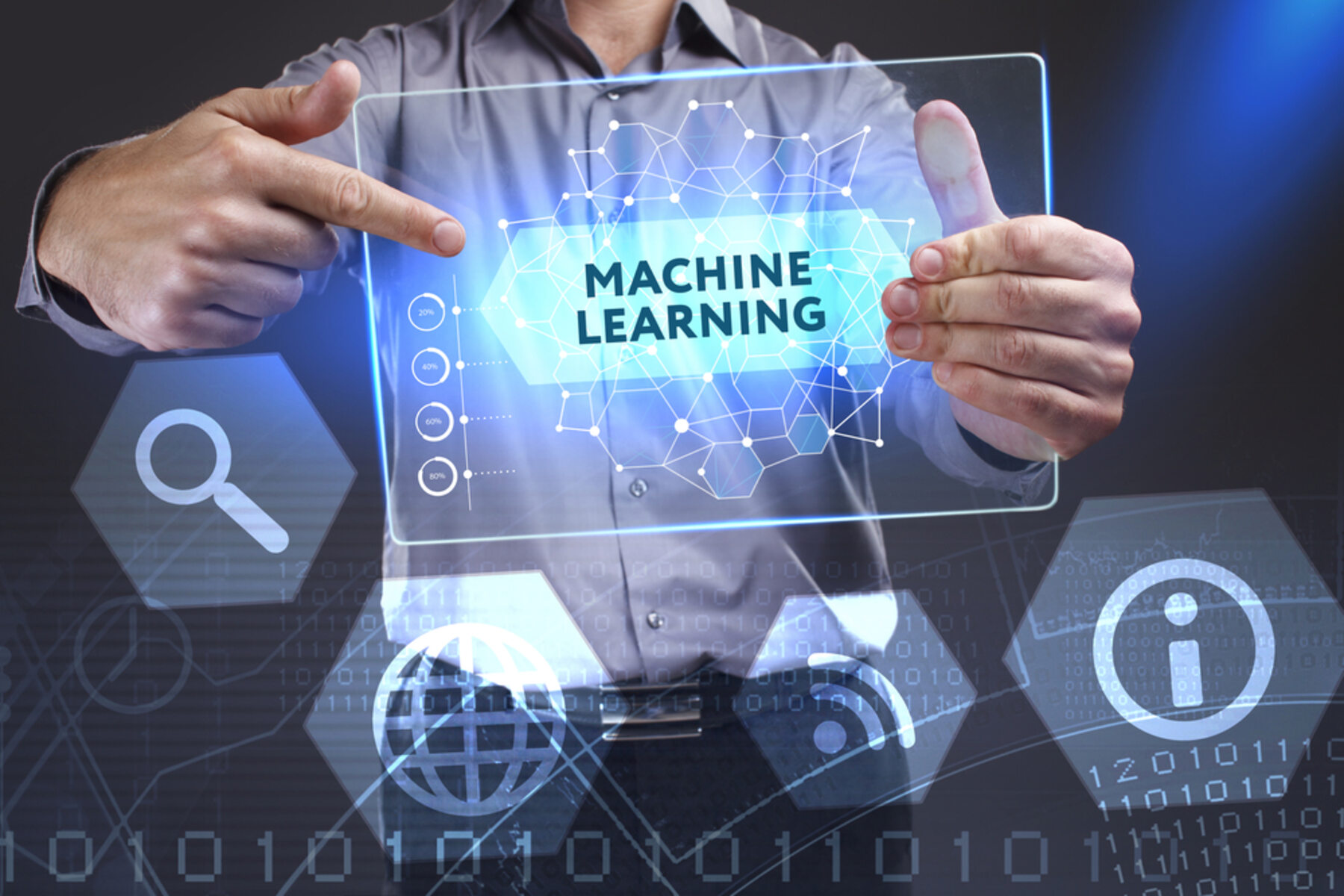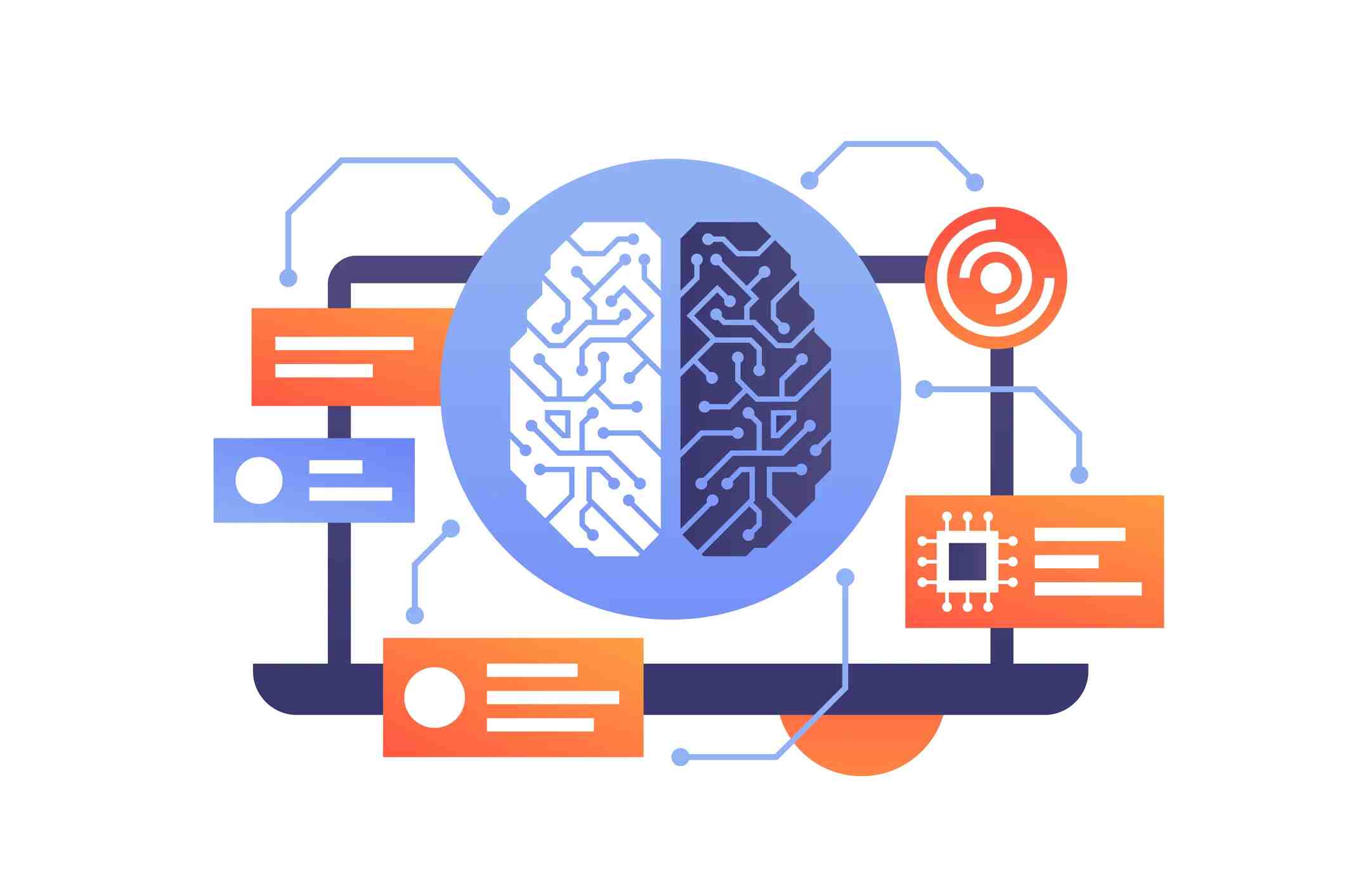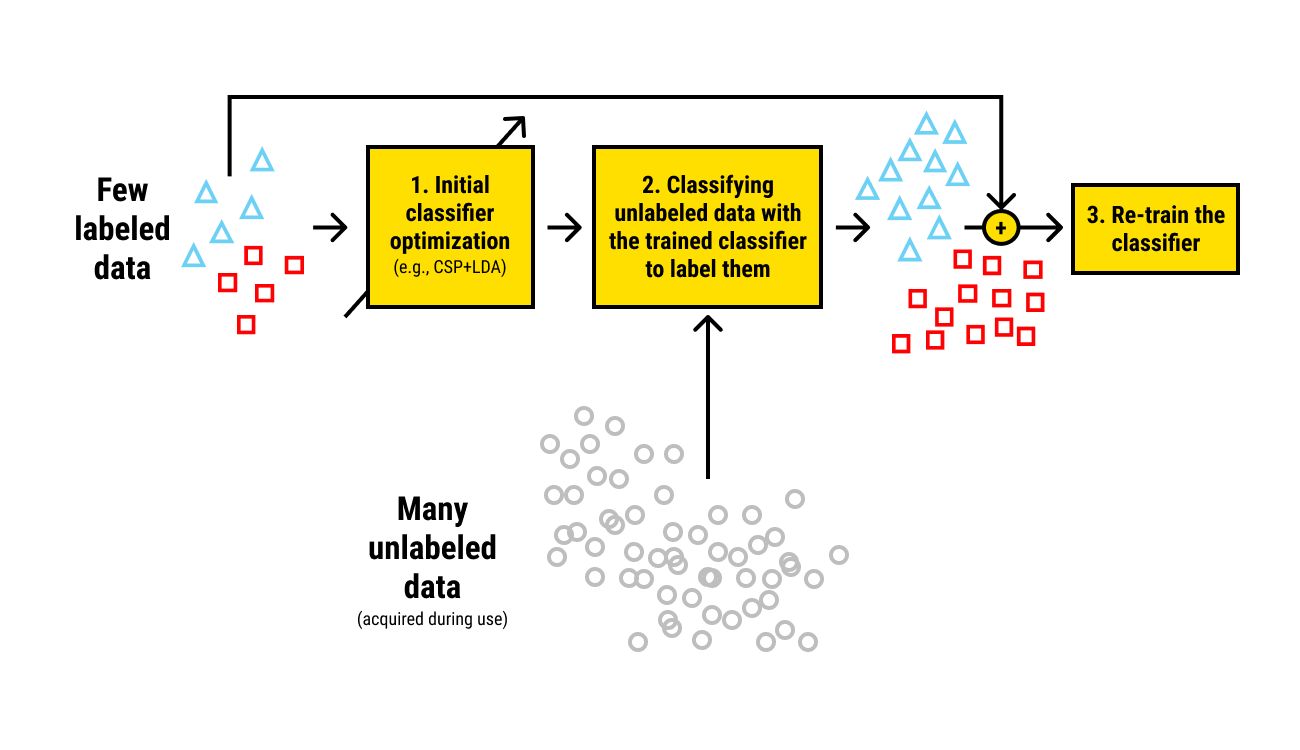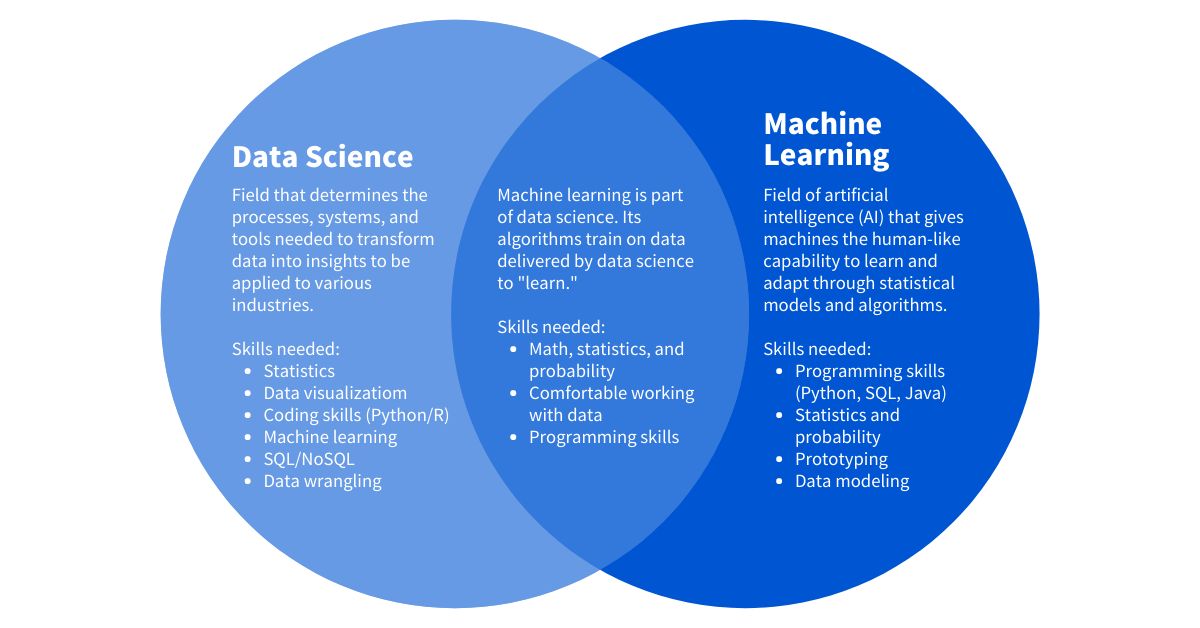Introduction
Machine learning is a rapidly growing field in the field of artificial intelligence (AI) that focuses on developing algorithms and models capable of learning from data and making intelligent decisions. Within the realm of machine learning, there are various approaches used, including supervised and unsupervised learning. These two approaches differ in how they learn from data and make predictions or identify patterns.
Supervised machine learning involves using labeled training data, where the algorithm is trained on inputs and their corresponding outputs. The goal is for the algorithm to learn the relationship between the input variables and the target variable, so it can accurately predict the output for unseen data. On the other hand, unsupervised machine learning deals with unlabeled data, where the algorithm must find patterns or structures in the data without any predefined output variable.
In this article, we will explore the main differences between supervised and unsupervised machine learning, as well as their applications, advantages, and disadvantages.
It is important to note that both supervised and unsupervised machine learning have their own strengths and weaknesses, and the choice between them depends on the specific problem at hand and the available data.
Definition of Supervised Machine Learning
Supervised machine learning is a subfield of machine learning where the algorithm learns from labeled training data. In this approach, the training data consists of a set of input variables (features) and their corresponding output variables (labels or target variables).
The main objective of supervised learning is to build a model that can accurately map the input variables to the output variables, based on the patterns and relationships present in the training data. The model can then be used to make predictions or classify new, unseen data.
The labeled training data serves as a teacher for the algorithm. By observing the relationship between the input and output variables, the algorithm tries to find a generalized pattern that can be applied to new, unseen data. This pattern is captured by the model, which can then make predictions or classifications for future data points.
Supervised learning can be further categorized into two types: regression and classification. In regression, the goal is to predict a continuous numerical value as the output variable. Examples include predicting the price of a house based on its features or forecasting stock prices.
On the other hand, classification aims to assign instances to predefined categories or classes. This can be binary classification, where the output variable has two classes, such as spam detection or sentiment analysis, or multi-class classification, where the output variable has more than two classes, such as image recognition or predicting the type of a disease based on symptoms.
Supervised machine learning algorithms include linear regression, logistic regression, decision trees, random forests, support vector machines (SVM), and artificial neural networks (ANN), among others. These algorithms use different mathematical techniques and models to capture and represent the patterns and relationships in the training data, with the goal of achieving high accuracy and minimizing errors in predictions.
Definition of Unsupervised Machine Learning
Unsupervised machine learning is a subfield of machine learning where the algorithm learns from unlabeled training data. Unlike supervised learning, there are no predefined output variables or labels associated with the input data.
The primary objective of unsupervised learning is to identify patterns, structures, or relationships within the data without any prior knowledge of the expected outcomes. It aims to discover hidden patterns or groups that may not be obvious to human observers.
In unsupervised learning, the algorithm explores the data and looks for similarities, differences, or clusters based on the patterns and relationships present in the data. It does not have a specific target variable to predict or classify.
One common technique used in unsupervised learning is clustering, which involves grouping similar data points together based on their inherent characteristics. By clustering data points, the algorithm can identify natural groupings or clusters within the data.
Another approach in unsupervised learning is dimensionality reduction, where the algorithm reduces the number of variables or features in the data while preserving its structure and important information. This can help in visualizing and understanding complex data sets.
Unsupervised learning is widely used in various applications, such as customer segmentation, anomaly detection, market basket analysis, and recommendation systems. It can also be used as a preprocessing step for supervised learning algorithms by discovering informative features or reducing noise in the data.
Common unsupervised machine learning algorithms include k-means clustering, hierarchical clustering, principal component analysis (PCA), and association rule mining techniques like Apriori and FP-Growth. These algorithms employ different mathematical and statistical techniques to uncover the underlying patterns and structures in the data.
It is worth noting that unsupervised learning is often more challenging than supervised learning, as there is no ground truth to compare predictions against. The effectiveness of unsupervised learning algorithms is evaluated based on their ability to discover meaningful patterns and provide valuable insights into the data.
Main Differences between Supervised and Unsupervised Machine Learning
Supervised and unsupervised machine learning differ in several key aspects, including the availability of labeled data, the learning process, and the output produced. Understanding these differences is crucial in determining which approach is appropriate for a given problem.
1. Labeled vs. Unlabeled Data:
The primary distinction between supervised and unsupervised learning lies in the availability of labeled data. In supervised learning, the training data consists of input variables and their corresponding output labels. Conversely, unsupervised learning relies solely on unlabeled data, where there is no predefined output variable associated with the input.
2. Learning Process:
In supervised learning, the algorithm learns from labeled data by finding patterns and relationships between input variables and output variables. It aims to generate a model that accurately predicts the output for unseen instances based on the observed patterns. On the contrary, unsupervised learning algorithms explore the data without any predefined output. Their objective is to discover underlying structures, clusters, or patterns in the data.
3. Types of Problems:
Supervised learning is suitable for tasks that involve predicting or classifying outcomes. Regression problems where the goal is to estimate a continuous numerical value fall under supervised learning, as do classification tasks where instances are assigned to predefined classes or categories. Unsupervised learning, on the other hand, is employed when the goal is to explore and understand the data without predefined categories or labels.
4. Output Produced:
Supervised learning algorithms generate models that can make predictions or classifications for new, unseen instances. These models provide explicit output based on the training data that includes both input and output variables. In contrast, the output produced by unsupervised learning algorithms is usually in the form of discovered patterns, clusters, or relationships. These outputs help in gaining insights into the data and identifying hidden structures.
5. Evaluation:
Evaluating the performance of supervised learning algorithms is relatively straightforward as there are labeled data points available for comparison. Metrics such as accuracy, precision, recall, and F1 score can be used to measure the performance. However, assessing unsupervised learning algorithms is more challenging since there are no predefined labels or ground truth. Evaluation often involves assessing the quality of discovered clusters, patterns, or reductions and their usefulness in subsequent data analysis.
Understanding the key differences between supervised and unsupervised learning is essential in selecting the suitable approach for a particular problem. Ultimately, the choice depends on the availability and nature of the data, the problem domain, and the desired outcome.
Example Applications of Supervised Machine Learning
Supervised machine learning has found applications in various domains where accurate predictions or classifications are crucial. Here are some examples that highlight the practical use of supervised learning algorithms:
1. Email Spam Filtering:
Supervised learning algorithms can be employed to filter and classify emails as spam or not spam. By training the algorithm on a labeled dataset of spam and non-spam emails, it can learn to recognize patterns and characteristics that distinguish spam messages from legitimate ones.
2. Medical Diagnosis:
In the field of healthcare, supervised learning algorithms can be used to aid in diagnosing diseases or medical conditions. Training the algorithm on labeled medical data, it can learn to identify patterns in patient symptoms, medical history, and test results to classify diseases accurately.
3. Image Recognition:
Supervised learning plays a vital role in computer vision applications, such as image recognition and object detection. By training algorithms on large annotated image datasets, they can learn to recognize and distinguish specific objects or features in images, enabling applications like facial recognition or autonomous vehicles.
4. Stock Market Prediction:
Supervised learning algorithms can be utilized to predict stock prices or market trends by training on historical stock market data. It can capture patterns, trends, and relationships in stock prices, economic indicators, and other relevant factors to make predictions on future price movements.
5. Fraud Detection:
Supervised learning algorithms can help identify fraudulent activities in various domains, including credit card fraud detection and insurance claim fraud detection. By training the algorithm on labeled data indicating fraudulent and non-fraudulent transactions or claims, it can learn to detect suspicious patterns or anomalies, aiding in fraud prevention.
6. Sentiment Analysis:
Supervised learning algorithms can be applied in sentiment analysis to determine the sentiment expressed in text data, such as customer reviews or social media posts. Training the algorithm on labeled data with positive, negative, or neutral sentiments, it can learn to classify new text data based on the sentiments it conveys.
These examples demonstrate the wide range of applications that benefit from the predictive and classification capabilities of supervised machine learning algorithms. By leveraging labeled data, these algorithms can provide valuable insights and make accurate predictions in various domains.
Example Applications of Unsupervised Machine Learning
Unsupervised machine learning techniques are widely used in various domains to discover patterns, clusters, and relationships within data. Here are some examples that illustrate the practical applications of unsupervised learning:
1. Customer Segmentation:
Unsupervised learning algorithms can be used to segment customers into groups based on their purchasing behaviors, preferences, or demographics. By examining the patterns inherent in the data, these algorithms can help businesses identify distinct customer segments and tailor marketing strategies accordingly.
2. Market Basket Analysis:
Unsupervised learning algorithms can analyze transactional data to identify associations or relationships among items frequently bought together. This information can be utilized by retailers for product placement, cross-selling, and targeted marketing campaigns.
3. Anomaly Detection:
Unsupervised learning techniques are valuable for identifying abnormal or anomalous instances in data. This can be applied to various domains, such as fraud detection, network intrusion detection, or equipment failure detection. By identifying anomalies, these algorithms can assist in identifying suspicious activities or potential failures.
4. Topic Modeling:
Unsupervised learning algorithms, like Latent Dirichlet Allocation (LDA), can identify topics or themes within text documents without any prior knowledge of the content. This technique is widely used in areas such as document classification, content recommendation, and sentiment analysis.
5. Image and Document Clustering:
Unsupervised learning algorithms can group similar images or documents together based on their content or features. This can be useful in applications such as image recognition, document organization, and information retrieval.
6. Dimensionality Reduction:
Unsupervised learning techniques, such as Principal Component Analysis (PCA), can reduce the number of variables or features in a dataset while retaining the most relevant information. This aids in visualizing high-dimensional data, identifying important features, and improving the efficiency of subsequent machine learning algorithms.
These examples highlight the versatility of unsupervised machine learning algorithms in analyzing data, discovering patterns, and providing insights. By exploring the inherent structure of the data, unsupervised learning techniques can uncover valuable information that can be utilized in a variety of applications.
Advantages and Disadvantages of Supervised Machine Learning
Supervised machine learning offers several advantages that make it popular for a wide range of applications. However, it also has certain limitations that need to be considered. Here are the advantages and disadvantages of supervised machine learning:
Advantages:
1. Predictive Accuracy: Supervised learning algorithms can achieve high accuracy in predictions or classifications, especially when trained on a large and diverse dataset with meaningful features. They can effectively learn the relationships between input variables and output variables, leading to accurate predictions for unseen data.
2. Availability of Labeled Data: Supervised learning relies on labeled data, which is often easier to obtain compared to unlabeled data. Labeled data allows the algorithm to learn explicitly from the provided examples, enabling accurate predictions and classifications.
3. Interpretability: Supervised learning models are often more interpretable than their unsupervised counterparts. The relationship between input variables and the predicted outcome can be understood and analyzed, providing insights into the decision-making process.
4. Transferability: Once trained, supervised learning models can be easily transferred to new, similar tasks. The knowledge gained from one problem can be applied to similar problems, reducing the need for extensive retraining.
Disadvantages:
1. Dependency on Labeled Data: Supervised learning algorithms require labeled data for training, which can be time-consuming and costly to obtain. The quality and representativeness of the labeled data directly impact the performance and generalization capability of the model.
2. Difficulty in Handling Unseen Data: Supervised learning models may struggle when faced with unseen data that significantly deviates from the training distribution. They rely on the assumption that the future data will have the same characteristics as the training data, which may not always hold true.
3. Overfitting or Underfitting: Supervised learning models can suffer from overfitting, where the model becomes too complex and fits the training data too closely, leading to poor generalization on unseen data. On the other hand, underfitting occurs when the model is too simple to capture the underlying patterns and relationships in the data, resulting in suboptimal performance.
4. Labeling Bias and Subjectivity: Labeled data can be prone to biases and subjectivity. The quality and consistency of labeling may vary, leading to potential biases in the trained model. Moreover, certain tasks, such as sentiment analysis, can be subjective, making it challenging to have universally agreed-upon labels.
Understanding the advantages and disadvantages of supervised machine learning is crucial in assessing its suitability for a given problem. While it offers high predictive accuracy and interpretability, it requires labeled data and might struggle with unforeseen scenarios or biases inherent in the data.
Advantages and Disadvantages of Unsupervised Machine Learning
Unsupervised machine learning offers unique advantages and also presents certain challenges. Understanding the advantages and disadvantages of unsupervised learning is essential when considering its application in various domains. Here are the key advantages and disadvantages of unsupervised machine learning:
Advantages:
1. Pattern Discovery: Unsupervised learning algorithms excel at discovering hidden patterns, structures, or relationships within data. They can provide valuable insights into the data and reveal information that may not be apparent at first glance. This is particularly useful in exploratory data analysis and generating hypotheses for further investigation.
2. No Dependence on Labels: Unlike supervised learning, unsupervised learning does not rely on labeled data, making it more flexible in dealing with unlabeled or partially labeled datasets. This can significantly reduce the cost and effort involved in obtaining labeled data, making it suitable for large-scale or real-world applications where labeled data may be scarce or expensive.
3. Scalability: Unsupervised learning algorithms can be more scalable compared to supervised learning approaches. Since they do not rely on specific output labels, they can process large volumes of data efficiently, making them suitable for big data applications.
4. Anomaly Detection: Unsupervised learning techniques are well-suited for identifying anomalies or outliers in data. By uncovering irregularities or deviations from the expected patterns, they can be used in various fields, including fraud detection, network intrusion detection, and fault detection.
Disadvantages:
1. Lack of Supervision: The absence of labeled data in unsupervised learning presents a challenge in evaluating and interpreting the results. The absence of ground truth labels makes it difficult to assess the accuracy or quality of the discovered patterns or clusters objectively.
2. Interpretability: Unsupervised learning algorithms may produce results that are challenging to interpret or explain. While they can uncover patterns or clusters, it can be difficult to assign specific meanings or labels to them without additional context or domain knowledge.
3. Difficulty in Evaluation: Evaluating the effectiveness and performance of unsupervised learning algorithms can be subjective and challenging. Since there is no predefined output to compare against, it can be unclear whether the identified patterns or clusters are meaningful or simply artifacts of the algorithm.
4. Sensitivity to Input Data: Unsupervised learning is highly dependent on the quality and characteristics of the input data. The presence of noise, outliers, or irrelevant features can adversely affect the results and lead to inaccurate or misleading patterns or clusters.
Unsupervised machine learning offers the advantage of uncovering hidden patterns and relationships in data without relying on labeled examples. However, it requires careful evaluation and interpretation due to the absence of supervision and potential challenges related to scalability and result interpretation.
Conclusion
Supervised and unsupervised machine learning are two essential approaches in the field of artificial intelligence that serve different purposes and have distinct advantages and disadvantages.
Supervised machine learning, with its reliance on labeled data, excels at making accurate predictions and classifications. It is suitable for tasks that require explicit output variables and can be utilized in various domains such as email spam filtering, medical diagnosis, image recognition, and fraud detection. However, it requires a significant amount of labeled data and may struggle with handling unseen data or bias inherent in the labeled dataset.
On the other hand, unsupervised machine learning algorithms excel in discovering hidden patterns, structures, and relationships within data. They are valuable for tasks such as customer segmentation, anomaly detection, and topic modeling. Unsupervised learning has the advantage of not requiring labeled data, making it more flexible and scalable. However, the interpretations and evaluations of unsupervised learning results can be subjective, and they may lack the predictive accuracy of supervised learning.
Ultimately, the choice between supervised and unsupervised learning depends on the nature of the problem, the availability of labeled data, and the desired outcome. In many real-world scenarios, a combination of both approaches may be necessary to gain a comprehensive understanding of the data and make accurate predictions or classifications.
As the field of machine learning continues to advance, new techniques and algorithms are being developed to address the limitations of both supervised and unsupervised learning. Hybrid approaches, semi-supervised learning, and active learning methodologies are being explored to leverage the strengths of both approaches and improve overall performance.
In conclusion, supervised and unsupervised machine learning offer powerful tools for analyzing and extracting insights from data. Understanding their differences, advantages, and disadvantages is crucial in determining the most suitable approach to tackle specific problems and unlock the full potential of machine learning in various domains.







